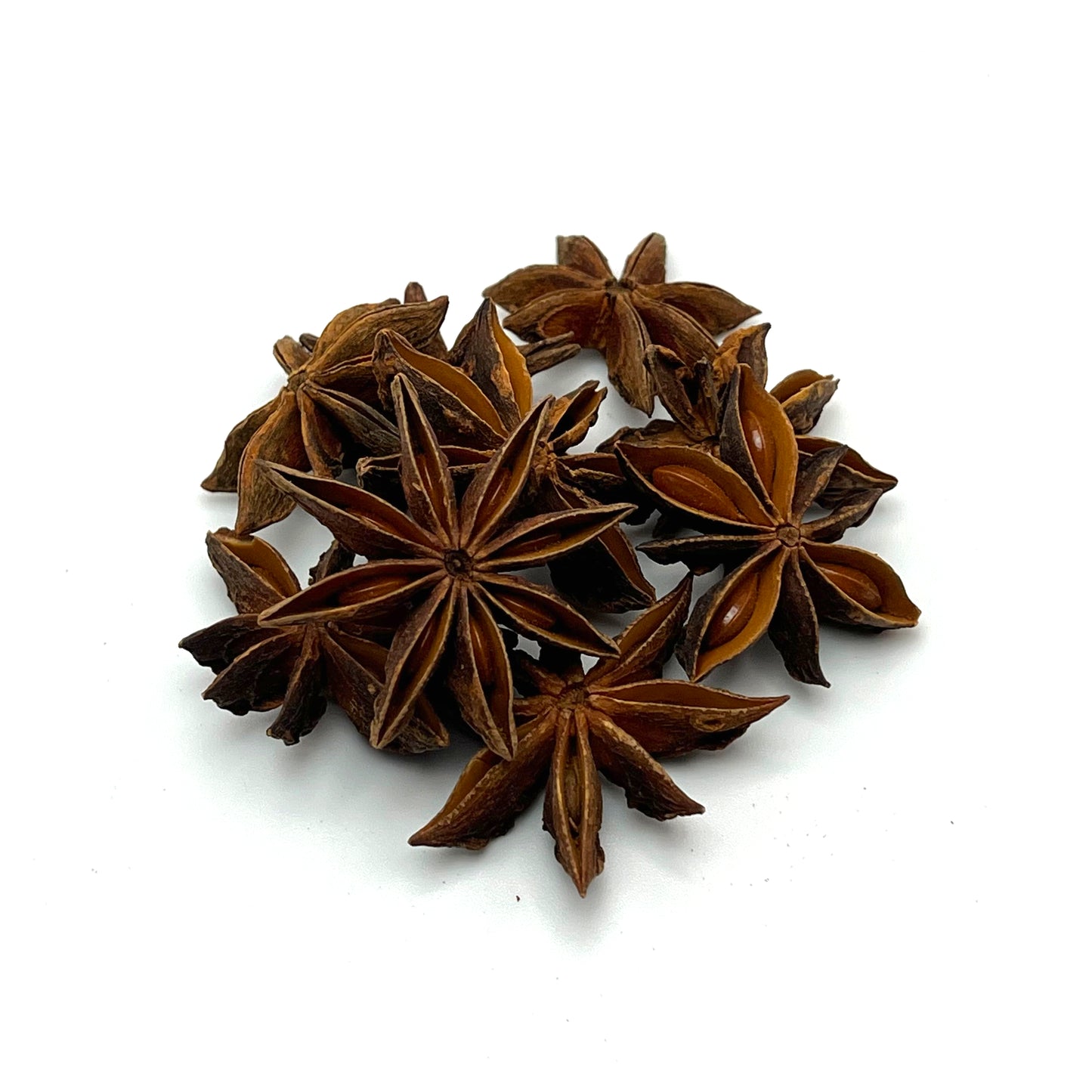Tasmanian Spice Traders
Star Anise
Star Anise
Couldn't load pickup availability
Botanical Name: Illicium verum
Flavor: Licorice, Pungent, Sweet, Warm, and Earthy
Origin: China
Use With: Beef, Chicken, Pork, Lamb, Duck, Fish, Seafood, Tofu, Vegetables, Squash, Legumes, Eggs, Citrus, and Baked Goods
Description: Used as a medicine and a spice in Southern China and Southeast Asia for more than 3,000 years, Star Anise is considered by many to be one of the most beautiful spices in the culinary world. Shaped like an actual star with each point of the rust colored pod containing a seed that gleams like a polished bead makes Star Anise stand out in any spice rack. This versatile, aromatic spice with its warm licorice like flavor can be used whole or ground in both sweet and savory dishes making it useful for cooking, baking, and even candy making.
Though they have a similar flavor and even share a common word, Star anise and Aniseed are not botanically related. Star Anise is the dried fruit of an evergreen shrub in the magnolia family while Aniseed comes from a delicate plant in the parsley family. While they can be used relatively interchangeably (ground Star Anise for Aniseed and vice versa) ; Star Anise is more complex and potent in flavor with less sweetness compared to Aniseed.
Suggested Uses:
A staple ingredient in many Asian dishes, use to make traditional Vietnamese Pho, Chinese Red Braised dishes, Asian tea eggs, Indian Biryanis, Masala Chai, and much, much, more…
- Use whole pods in pickling brines, soups, stews, braises, the poaching liquid for fruits, mulled cider or wines, and herbal teas to add depth of flavor
- Ground Star Anise can be added to dry rubs, marinades, sauces, baked goods, curries, stir fries, and even lightly dusted over fresh cut fruits (especially citrus) to add a contrasting warmth
- Add a bit to vanilla sorbet or frozen custard
- Try a bit in pasta or pizza sauce
- Add a bit to fruit pie fillings, or add a pod to tea, coffee, hot chocolate, or warm milk for a warming and stomach soothing addition


